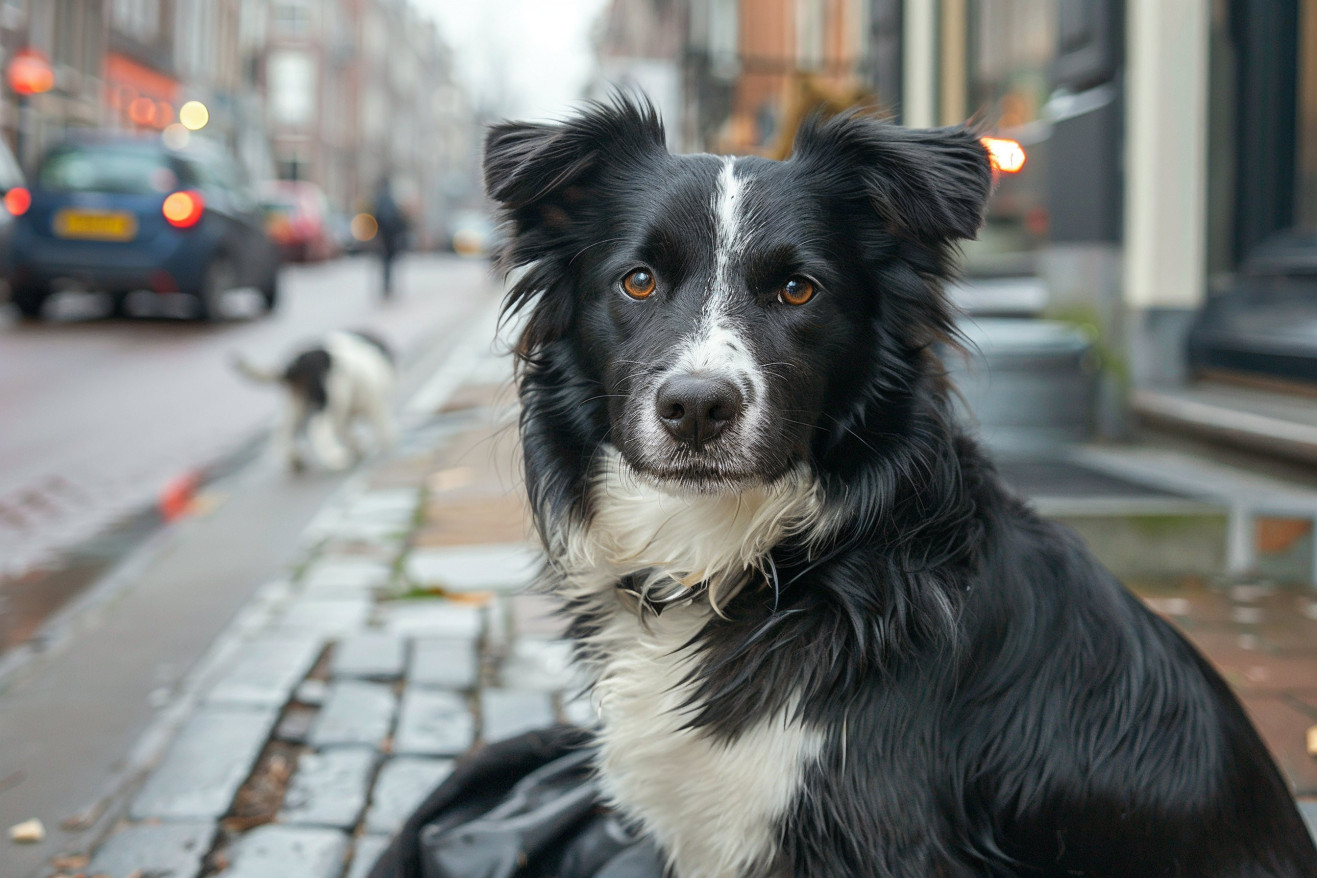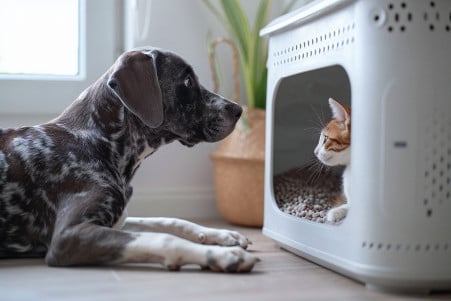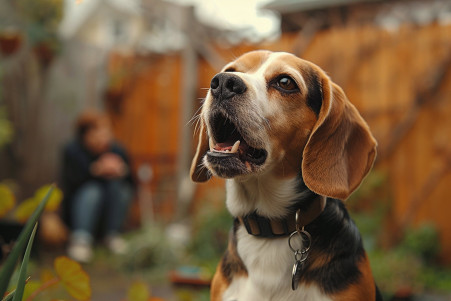What Is ‘Curb Your Dog’? The Meaning and Impact of the Phrase
7 March 2024 • Updated 6 March 2024

If you’ve ever walked your dog in a city, you’ve probably heard the phrase ‘curb your dog.’ Curb your dog is a well-known command that tells dog owners to control their dogs on city streets, to make sure they go to the bathroom on or near the curb, and to clean up after them so that the public space stays clean.
This article will explore the historical roots, legal definitions, and community impacts of the phrase “curb your dog.” By looking at city laws, public health research, and environmental science, we’ll see that this behavior is more than just a social nicety—it’s a critical part of being a dog owner in a city and maintaining public health.
This investigation will help us understand what dog owners are expected to do and how these rules affect our public spaces.
What does 'curb your dog' mean?
History: The Evolution of ‘Curb Your Dog’
In the crowded streets of 1930s New York City, the phrase ‘curb your dog’ was born as a rule of urban etiquette. Originally, the city’s industrial designers created ‘Curb Your Dog’ signs to discourage dogs from defecating on the sidewalk and instead direct them to the curb. The goal was purely utilitarian—if dogs defecated in the gutter, the city’s regular street-cleaning services could easily remove the waste, as Wikipedia notes.
The effort was as much about public awareness as it was about public health. The stark signs, which were designed by industrial designer Walter Kacik for the New York City Department of Sanitation, featured a bold message against a simple background, a design choice that reflected the city’s embrace of modern industrial design.
Yet over time, the meaning of the phrase became increasingly confused due to the passage of pooper-scooper laws. As the Wikipedia entry for ‘Curb Your Dog’ explains, pooper-scooper laws led some people to mistakenly believe that the historical signs were a legal requirement to clean up after their dogs.
Nevertheless, the idea of ‘curbing’ that was originally embedded in city ordinances has ultimately become clearer and more enforceable, reinforcing the idea of responsible pet ownership. By using the law to shape social norms, cities like New York have turned ‘curbing’ from a suggestion into a community expectation. This process of change demonstrates the ongoing interplay between public behavior and city policy in the effort to create cleaner, healthier cities.
What Are Pooper-Scooper Laws and How Do They Impact City Cleanliness?
The idea of curbing your dog has led to the creation of pooper-scooper laws. These laws require dog owners to remove their dog’s waste from public and private property, taking the idea of curbing your dog from a social norm to a legal requirement.
In New York City, where the laws originated, failure to do so can result in fines of up to $100. Seattle also has pooper-scooper laws, but they go a step further by requiring dog owners to remove their dog’s waste from their property at least once every 24 hours, according to the Seattle Municipal Code.
The laws are most effective when they are combined with public awareness, which is often done through signage, according to Dog Poop Signs. Fines for breaking the laws vary from place to place, with some cities charging up to $750 for repeat offenders, according to Cuteness. The laws are important because dog feces are a major source of bacterial infections, including E. coli, and can lead to water and soil pollution.
It takes a community effort to ensure that these laws are followed, and that the public health and cleanliness standards they are meant to uphold are maintained. This means that people must be aware of the laws and willing to follow them for the greater good.
Dog Poop and Public Health
In addition to being an eyesore, dog poop is a public health concern because it can contaminate water and soil.
The Department of Health notes that pet feces can contain bacteria like E. coli and Salmonella that can be carried by rainwater into rivers and bays, increasing the risk of human illness.
In fact, in urban areas, the concentration of dogs can lead to environmental contamination in as little as a few days, with the EPA reporting that the feces from just 100 dogs can cause a bay to be closed to swimming and shellfishing for several days due to bacterial pollution.
A study in PMC also found that dog poop can be a reservoir for multidrug-resistant bacteria, including methicillin-resistant Staphylococcus aureus (MRSA) and resistant Enterococci. These bacteria are especially dangerous to children and people with weakened immune systems, who are more susceptible to infection.
Health organizations have stressed the importance of proper pet waste disposal to reduce these risks. The Canadian Public Health Association notes that diseases like campylobacteriosis and salmonellosis, which can be transmitted by dog feces, can have serious health consequences, especially for at-risk populations. It’s important for dog owners to follow proper waste disposal guidelines to prevent the transmission of these harmful bacteria and protect the well-being of our communities.
Building a Sense of Community to Address Dog Poop
Communities have also proven to be fertile ground for creative programs that seek to address the issue of dog poop. In Prince George’s County, Maryland, The Department of the Environment launched a comprehensive public outreach program that used interactive events and educational materials to reduce waste, according to an article in Parks and Recreation Magazine.
The program’s success was driven by the involvement of community members and school children, showing how community engagement can lead to change.
In many cases, social norms dictate whether people will follow ‘curb your dog’ signs. For example, a study by Penn State University showed that people are more likely to pick up after their dogs when they are on a leash, indicating that visible demonstrations of responsibility can help reinforce social norms and encourage others to do the same.
At the same time, the study showed that convenience is also a factor, with the availability of pet waste stations making a big difference in whether people pick up after their pets.
The impact of dog poop on the community can be significant, turning beautiful parks into wastelands. The Environmental Finance Center and People for Change Coalition have shown that innovative programs and community involvement can help build awareness of the importance of pet waste management, bringing together public health and environmental concerns.
By using education and outreach, communities can influence social norms and create a culture of responsible pet ownership that ensures public spaces are clean and safe for everyone.
The Environmental Impact of Dog Poop: What You Need to Know
The environmental consequences of dog poop go well beyond the immediate problems of bad smells and unsightly sights. In fact, researchers at Ghent University have shown that dog poop has a worrying ecological impact, with the soil in nature reserves showing elevated levels of nitrogen and phosphorus from dog feces.
While these nutrients are necessary for plants, when they reach high levels, they can have negative effects, including the growth of invasive plant species and the potential displacement of native animals, as demonstrated in a study in People and Nature.
The Environmental Protection Agency has even labeled dog poop as a nonpoint source pollutant, meaning that it contributes to water pollution in a way that’s similar to pesticides and industrial pollutants. This label from the Environmental Protection Agency shows that the environmental effects of dog poop are far-reaching and, as Ghent University’s research shows, can last for years.
Responsible waste management is necessary to protect our natural reserves. However, we can help to minimize these effects by removing and disposing of dog poop in a responsible way. Even simple measures, such as using biodegradable bags and supporting local waste management programs, can help to lessen the environmental impact of our dogs.
In doing so, we can help to protect and support the ecosystems that enrich our lives and the lives of generations to come.
A Community Effort to Keep the Streets Clean: Everything You Need to Know About ‘Curb Your Dog’
From the historical sidewalks of 1930s New York City to the present-day city streets, the legacy of ‘curb your dog’ has proven to be long-lasting. What started as a simple phrase has evolved into a complex movement that includes everything from laws to community-mindedness. Pooper-scooper laws, which were born out of early public health initiatives, have become a vital part of responsible pet ownership and keeping cities clean.
The well-being of our communities and the planet hinges on the commitment of every dog owner to this movement. Public health professionals have outlined the dangers of letting dog waste go uncollected, and it’s up to us to make sure we’re on top of it. In addition, when we protect the parks and other public spaces we share with others, it’s a social contract between dog owners and the world around them.
When we think about the social contract that’s tied to dog waste, it’s clear that the act of curbing dogs has implications that go well beyond cleanliness. As the stewards of public health and the planet, we all have a role to play. When we take that role on, we ensure that future generations will be able to enjoy public spaces that are clean, healthy, and in balance with the world around them.


